Alexander’s Top Ten of 2017
As we watched our nation’s identity erode with the inauguration of that thing known as donald trump (proper nouns would support that he’s human and, frankly I have my doubts), we have to take time to highlight some of 2017’s finer moments in cinema both here and abroad. Like every year, 2017 was a challenge to consolidate into a top ten list but despite some agonizing missions and concessions here’s another list of what I consider to be the best of the year.
Honorable mentions: I, Tonya, BPM, Call Me by Your Name, Dunkirk, The Florida Project, Harmonium, The Killing of a Sacred Deer, Night is Short, Walk on Girl, The Beguiled, The Big Sick, The Happiest Day in the Life of Olli Maki, Nocturama, On the Beach at Night Alone
10. Ex Libris: New York Public Library
Frederick Wiseman’s work is difficult to summarize or review because it’s so matter-of-fact and self-evident, it’s almost as if there’s not much to say because the films say it all. His latest in his prolific career of fly-on-the-wall examinations of businesses, neighborhoods, towns, cities, and other various institutions, Wiseman has turned his cameras to the New York Libraries, and it’s an illuminating portrait of our countries most essential resources. Wiseman allows us to see the mechanics of running a library – the board meetings, the book sorting, workshops, the public speakers – and discussions with luminaries like Patti Smith, Elvis Costello, Richard Dawkins, and Ta-Nehisi Coates make this three-plus hour journey an enriching experience. Furthermore, in our declining cultural landscape that is being defiled by ignorance and bigotry, it’s inspiring to see that public libraries, whether they be non-profit or municipal, are still a significant factor that encourages the pursuit of knowledge and culture.
9. A Quiet Passion
If anyone but Terence Davies decided to make a film about Emily Dickinson, and if they cast an actor who wasn’t Cynthia Nixon, it would have been criminal. The very title is evocative of Davies’ entire career; his work is populated with studied, moody observations of confectionary flights of fancy within the scope of folksy realism. This time he transplanted himself to a distinctive period in American history and an iconic artist with whom he clearly identifies, and finds a muse to bring her to life. With this collective pool of talent, A Quiet Passion is concerned with realizing not just the art but the artist, and reconciling the most crucial fact – art is not only the product of toil, but the inherent evidence of an artful mind. Dickinson is a worldly muse whose eloquence and fluidity elemental to her as a person. Davies has reached many high points with a career of measured sumptuousness, but A Quiet Passion might be his most literate and rewarding work.
8. Get Out
I’ll admit, I thought about omitting this from my top ten; what the hell can I say about Get Out that hasn’t already been said, written, scribbled, yodeled, or discussed? But after a second viewing, I realized that when the work all adds up, you have a great movie, and there’s nothing wrong with being a part of the enormous conversation that is Jordan Peele’s directorial debut. Get Out hits all of those sweet spots. It’s witty, creepy, scary, smart, funny, violent, and crackling shrewd about our countries warped ideas regarding race. There’s not a wasted inch of space; every scene is loaded with allegory and rich symbolism. The scariest thing is that those painfully awkward interactions – how Rose’s father would have “voted for Obama a third time” and the sneering Caleb Landry Jones, talking about Chris’ “body type” – because we hear people say shit like that all the time. And it proves that those who overcompensate are usually the ones to keep an eye on.
7. Song to Song
I did not take immediately to Terrence Malick’s modern career. It took some time to warm to Knight of Cups, The Tree of Life, and To the Wonder, and while those films are good, Song to Song takes the distinction of being superlative as Malick steps beyond the role of a director. Here, he’s becoming something of an anthropologist, and the product is a film that stands out from his contemporary body of work because he’s delving into our modern cultural climate and it substantially strengthens his whimsical tendencies. While the heady and frequent themes of life, love, and all that are present, Song to Song is in pace with the minutia of modern life. There’s an curios enthusiasm and Malick finds a brilliantly energetic alliance with the Austin music scene. Malick’s fascination with the indulgences of the movie world as evidenced in Knight of Cups seems to have evolved, as an art form music is spirited, in the moment, a fiery and passionate means of expression that brings all walks of life together, there’s a primal sense of ritualism, mosh pits, dancing, crowdsurfing. While most artists are critical cynics of the world around them, Malick seems to be in love with it, and its people. Song to Song utilizes music as a fundamental way that people can communicate with one another and with a dynamic cast, a bevy of cameos and ever reliable cinematography of Emmanuel Lubezki this is evidence of a director who is growing and aging with the times and seems to be gobbling it all up.
6. A Ghost Story
Some of my earliest memories involve hiding underneath tables and chairs, because the sun would go behind the clouds and I was scared by the absence of light. David Lowry’s A Ghost Story is one of the first times a movie has ever realized that wavy feeling of unease that can roll over you at any given time. The ethereal otherness that can arise on a bright sunny day, when glimmers of light dance across the wall; those infrequent times when you feel that the house you’re in is more than a building and there’s a weight to the air. Maybe this is all a bit lofty, but A Ghost Story is a film about the fleeting transience of time, life, love, and death, and it’s so effective in its headiness because “it’s that Casey Affleck movie where he walks around covered in a sheet as a ghost.” While the sheet gimmick was a total selling point for me, the film is a brilliantly conceived story of personal loss that transcends time and history and manages to say a lot in the quietest possible manner, a purely moody delight.
5. After the Storm
The work of Hirokazu Koreeda is always a delight because he conceives simple narratives about the bittersweet relationships we have with our families and loved ones that are poignant, emotionally affecting, and understated. After the Storm is, however, consolidated, huddled, tightened, more honed in than Our Little Sister or Still Walking; its narrative feels a bit more focused, there’s a slightly different momentum, and yet it’s very much in tune with the subtle minutia of his body of work. The relatively small cast of familiar faces, especially that of Hiroshi Abe, Yoko Maki and Kirin Kiki, have this incredible chemistry (especially Abe and Kiki’s mother and son relationship), and their exchanges have that rhythmic authenticity and nitpicky affection that only exists among family members. After the Storm is some of Koreeda’s best films because it’s a continuation of what he does best, slyly exploring emotional longing, missed opportunities, the importance of change, or the pain that ensues when one is incapable of change while yearning over the past while there’s concern for the future. Koreeda can access the fragile interiors of existence without breaking a sweat.
4. Good Time
After seeing Good Time, I was uncomfortable. I felt rattled, shaken up as if being on the periphery made me an accessory to the exploits of Connie Nikas and his one-night tear through the five Burroughs. The Safdie brothers made an intense movie about unpleasant people doing bad things. And the reason why it’s improved upon a third viewing is that the Safdie Brothers are not only modern kinetic stylists, but they possess a keen understanding of people, an awareness of behavior and it’s injected into (the albeit disreputable) characters. Robert Pattinson has committed himself to a transformative role, and his realization of Connie Nikas is feral, and at times scary. Jennifer Jason Leigh is, as always captivating as his manic companion, and Barkhad Abdi gets a brilliantly brief showcase for his talents, but the most intriguing face was naturalist newcomer Buddy Duress. A recurring collaborator with the Safdie brothers as the fresh-out-of-jail, mangle-faced hustler, his rhetoric, physical essence, vocal inflections are so affectionately natural and convincing (e.g. people don’t “take Xanax” they “take some sticks”). There’s an honesty in his acting Duress and the hustling/street politics come naturally to this idiosyncratic individual.
Good Time bursts out of the door from the opening credits, and it’s instantly distinguished as this lysergic, street-born noir. It’s gritty, realistic, and has this electric charge of intensity but is remarkably beautiful, occasionally funny, artfully rendered and has something to say about the penal system and white privilege. There’s an unenforced boldness to the films visual style, there’s a snap to every scene, and they all leave a substantial impression. The ghoulish bank robbery masks, the dye covered Connie bullshitting his way into a Domino’s bathroom, the ink-stained money rolling through a counting machine, Ray’s woozy debauched flashback, the neon/blacklight nightmarish theme park sequence, the maze-like final chase between Connie and the police, it’s all very dizzying and vibrant with a tempered vibe of aesthetic brevity.
3. Personal Shopper
At the start of the year, it felt like the unofficial theme would be films that take an entirely new approach to exploring the afterlife. While David Lowry made the brilliant A Ghost Story, I think I fell in love with Kristen Stewart and Olivier Assayas all over again with Personal Shopper. Assayas is easily the most fascinating director working right now and, like I said with The Clouds of Sils Maria, the most modern and international. Personal Shopper is endlessly rewatchable, and every time through the film there’s a new narrative discovery, if I wander (and Assayas encourages that you do wander). Maureen’s narrative gives us so much; sometimes I’m looking at the classist implications of her job, the analogous line between social media and communicating with the dead, the relationship between Maureen and her boyfriend and employer, the bourgeois world of fashion, the murder mystery, and in between these beats there’s the autumnal atmosphere of Paris. It’s a movie where among these strong characters, the city is very much a leading player, and we’re made to feel comfortable and naked all at the same time. Assayas knows the significance of the way people connect, interact, and dissociate; no one else could have created, directed or starred in Personal Shopper.
2. Phantom Thread
I left the theatre in a jangled haze. I had a few block to walk to my car, I ran into a friend of mine and I had mentioned I just came from the theatre and what I saw, he invited me out for a beer, I couldn’t really talk and muttered that I needed to go home. When I got back to my apartment, I cleaned it very thoroughly while watching The Master. After my place was clean, I realized that Phantom Thread is one of the best movies I had seen in years. I find that with every film after Magnolia, Paul Thomas Anderson is approaching artistic enlightenment. There’s nothing associative about his aesthetic; he’s capable of finding emotional power and humor in the most unlikely circumstances. And Phantom Thread, a film about passion, perfection, dedication, obsession and how to reconcile those massive emotions in both your personal and professional life, it’s all very specific and yet I can’t think of anything like it.
There’s something special about the collaboration of Daniel Day-Lewis and Anderson, and if this is indeed his send off then we can know he ended his career on a high note. We associate Day-Lewis with these larger-than-life characters – homicidal gang lord Bill the Butcher, sociopathic oil baron Daniel Plainview, iconic US president Abraham Lincoln – so when I saw the trailer for the latest Paul Thomas Anderson film with Daniel Day-Lewis, I was elated that he was playing an elusive dressmaker.
Usually, with Day-Lewis, we see every acre (we can’t measure his acting in inches can we??) of his lively interpretations, but there’s this implacable interiority to Woodcock, and yet Lewis realizes him with his whole body. Always an all-encompassing performer, he manages to externalize this complicated individual and Anderson captures his lengthy figure in a series of endlessly hypnotic mid-level compositions. This is a man who is defined by dressing women; it should only be natural that he’s engrossed by the human figure and will exorcise that by acting with is own.
Phantom Thread is a gleefully twisted tale that is nervy and perversely comedic in a distinct flavor that we won’t find anywhere else, the cherry on top is Greenwood’s score which is like a woozily off-kilter lullaby for those deviated by the folly of love, or delusion of romance.
1. Dawson City: Frozen Time
The discovery of over 500 film reels from the silent era in an abandoned swimming pool out in the Yukon Territory is an exciting bit of business. But when you learn that this isn’t just a goldmine of lost silent films, but this excavated celluloid contains newsreels, documentaries, and photographs that tell an alternate history about the pioneering of the Yukon territory, the gold rush, the native populace, and it’s intrinsic link to the film industry it becomes something more than news, it’s an astonishing revelation.
Bill Morrison cobbles together a hypnotic and moving feature that blends the past and the present with a glacial veneer that evokes the sandblasted tenor of the period, providing a hazy tour through the colonialism and western expansion. Where else will you learn about the establishment of the Trump family (brothel owners by the way), the fixing of the infamous 1919 world series, the deportations of prominent anarchists Alexander Berkman and Emma Goldman, the bombing of JP Morgan’s Wall Street office? This and much more is all part of Dawson County’s history as an unlikely film distribution hub and those are just a few snapshot of the myriad history this film provides.



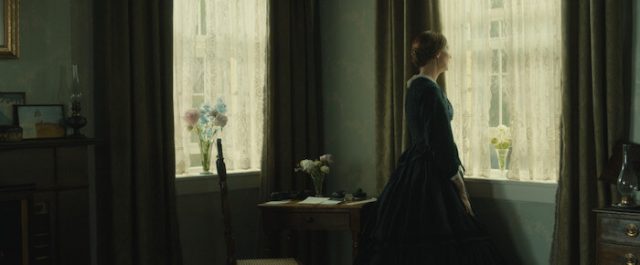




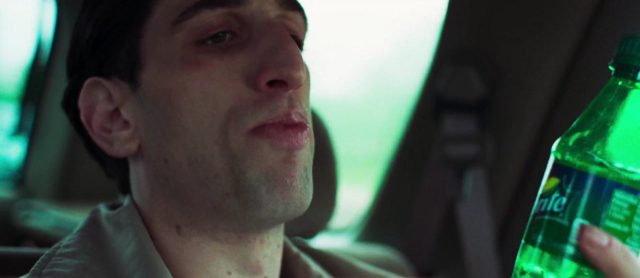
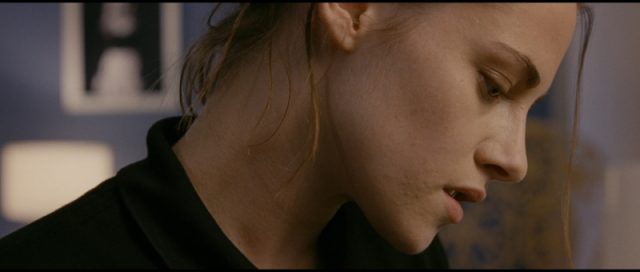




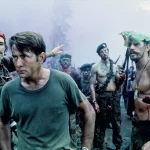

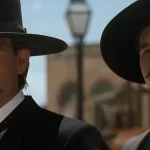









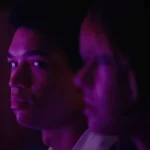













Plenty of non-humans are referred to with proper nouns, like Secretariat or Rin Tin Tin. Movie titles are proper nouns, but a substance like “film” or “celluloid” or a concept like “gravity” is not.
yeah Dood!